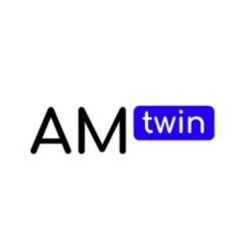The problem:
Additive manufacturing (AM) is growing rapidly at a rate of 27.5% annually, with a market worth $26.7 billion in 2020 that is predicted to reach $51 billion by 2030. However, its use is largely limited by part-building process parameters, in-built part defects, and the inherent properties of materials used in AM. To address the in-built defects, researchers use analytical simulations to study the influence of various building parameters. This is time-consuming and requires specialist skills; and even then, output results can be inconsistent and misleading. These high cost and expertise barriers limit SMEs from taking full advantage of additive manufacturing, and maximising the design and manufacturing freedoms and capabilities that the technique can offer.
The solution:
AMtwin team has developed a unique digital twin platform for metal 3D printing. Using proprietary statistical learning algorithms, AMtwin can simulate and predict heat stress, temperature, and potential defects in real-time based on accumulated process data. With the excellent fitting capability of the statistical learning algorithm, users can identify trends of a parameter set and rectify potential 3D printing problems.
AMtwin’s vision is to develop a data-driven process simulation and optimization platform for the additive manufacturing industry. We are initially targeting customers using Direct Energy Deposition (DED) and our technology is already being used by an international aircraft manufacturer to prototype large aerospace parts with DED 3D printing.

Over the next 12 months, we will collaborate with selected industrial partners to develop our first digital system prototype, with the aim of demonstrating its superior process simulation and prediction ability. In the next year, AMtwin aims release its first product and establish commercial partnerships in industry.
Traction:
- 2021: AMtwin received ICURe programme place and funding
Associated Programme

